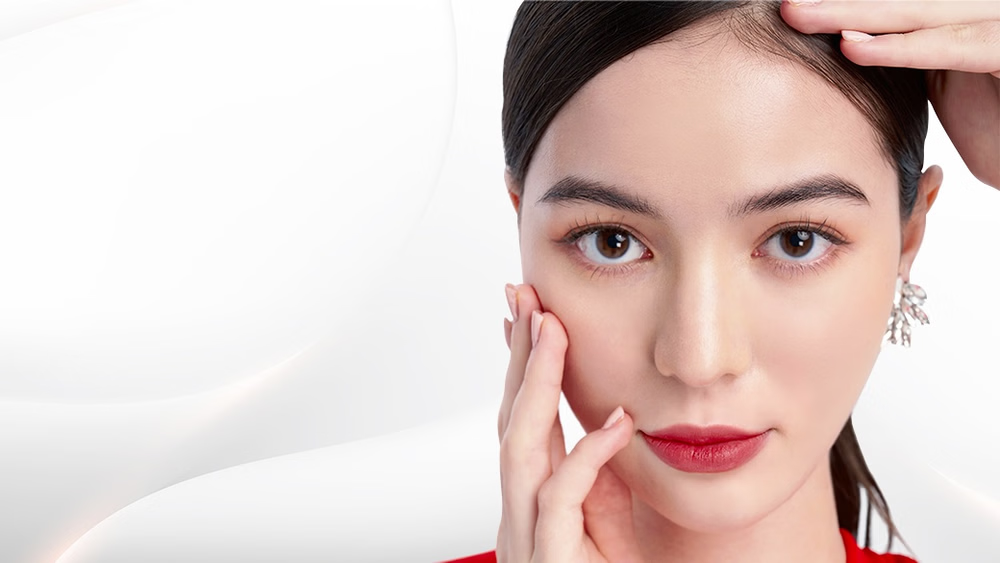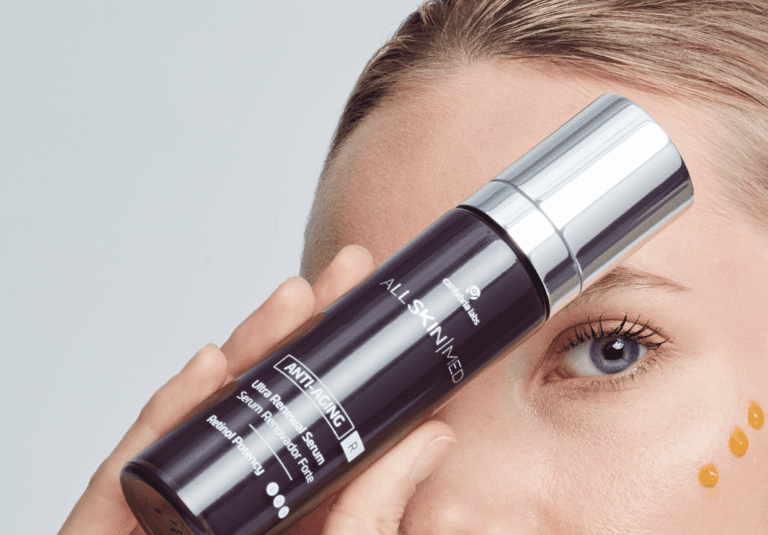Skin
Natural Hydrating Serums for Aging Skin
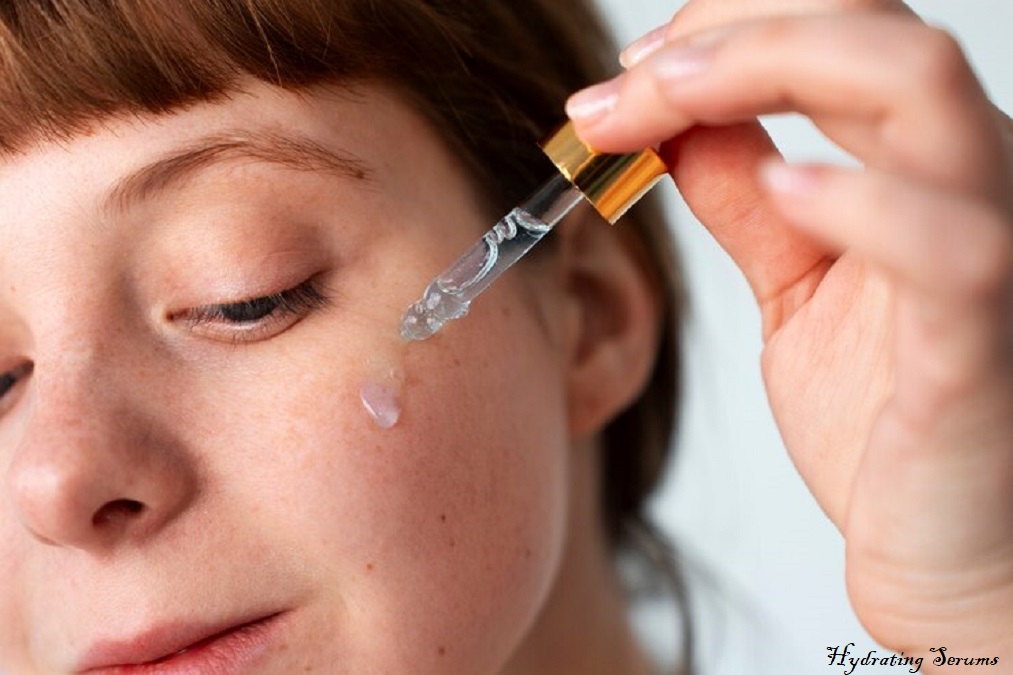
Often, aging skin needs more attention and hydration. Our skin becomes less elastic, hydrated, and incapable of self-repairing as we age. Hydrating serums can help with that. They provide intense moisture, which aids in skin renewal and plumpness. However, why should you use organic moisturizing serums? Now let’s get started.
What is a Hydrating Serum?
Hydrating serums are thin liquids that soak quickly and provide deep moisture to the skin. Serums have tiny molecules that permeate the skin more deeply than creams or lotions. Hydrating serums contain hyaluronic acid, glycerin, and antioxidants as key constituents.
Why Choose Natural Hydrating Serums?
Natural moisturizing serums are formulated without harsh chemicals or artificial smells using plant-based ingredients. They are frequently more ecologically friendly and milder on the skin. Natural cosmetics are a safer option for sensitive skin because they lower the possibility of irritation and allergic reactions.
Top Natural Ingredients for Hydrating Serums
Hyaluronic Acid
Hydration-wise, hyaluronic acid is a superpower. Its ability to retain water up to 1,000 times its weight makes it a highly potent tool for maintaining moisturized and luscious skin.
Aloe Vera
Aloe vera is well renowned for its calming and hydrating qualities. It’s ideal for adding moisture and soothing inflamed skin.
Vitamin C
Strong antioxidants like vitamin C can brighten skin and shield it from harm from the environment. Moreover, it encourages the synthesis of collagen, which is essential for preserving the suppleness of skin.
Jojoba Oil
Jojoba oil is a great moisturizer that doesn’t clog pores because it closely mimics the skin’s natural sebum. Rich in vitamins B and E, it promotes skin protection and restoration.
Green Tea Extract
Green tea extract has anti-inflammatory and antioxidant qualities in abundance. It can help sun-damaged skin look better and protect the skin from further harm.
Rosehip Oil
Antioxidants and vital fatty acids abound in rosehip oil. It promotes an even skin tone, lessens scars, and hydrates the skin.
How to Choose the Right Hydrating Serum for Your Skin Type
Identifying Your Skin Type
Knowing your skin type is crucial when selecting a moisturizing serum. Is your skin sensitive, combination, oily, or dry? Every skin type has unique requirements.
Matching Ingredients to Skin Needs
- Oily Skin: Look for lightweight, non-comedogenic ingredients like hyaluronic acid and green tea extract.
- Dry Skin: Choose richer ingredients like aloe vera and jojoba oil.
- Combination Skin: Opt for balanced formulas that hydrate without being too heavy.
- Sensitive Skin: Select gentle, soothing ingredients like aloe vera and rosehip oil.
DIY Natural Hydrating Serum Recipes
Simple Aloe Vera and Vitamin E Serum
- Ingredients:
- 2 tablespoons aloe vera gel
- 1 teaspoon vitamin E oil
- Instructions:
- Mix the ingredients in a small bowl.
- Transfer to a clean, airtight container.
- Apply a few drops to your face after cleansing.
Green Tea and Hyaluronic Acid Serum
- Ingredients:
- 1 teaspoon green tea extract
- 1 teaspoon hyaluronic acid powder
- 1/2 cup distilled water
- Instructions:
- Dissolve the hyaluronic acid powder in distilled water.
- Add the green tea extract and mix well.
- Store in a clean bottle and use daily.
Best Practices for Applying Hydrating Serums
Preparation and Cleansing
Always start with a clean face. Use a gentle cleanser to remove any dirt, oil, or makeup.
Application Techniques
- Apply a few drops of serum to your face and neck.
- Use your fingertips to gently pat the serum onto your skin.
- Avoid rubbing, as this can irritate.
Frequency of Use
You can apply most moisturizing serums twice a day, in the morning and at night. But always make sure you follow the directions on the product label.
Top Natural Hydrating Serums on the Market
Overview and Benefits
[Brand Name] Hyaluronic Acid Serum
- Hydrates deeply
- Lightweight and non-greasy
- Suitable for all skin types
Overview and Benefits
[Brand Name] Aloe Vera and Vitamin C Serum
- Soothes and brightens
- Ideal for sensitive skin
- Packed with antioxidants
Overview and Benefits
[Brand Name] Jojoba Oil and Green Tea Serum
- Balances oil production
- Reduces inflammation
- Great for combination skin
Common Mistakes to Avoid When Using Hydrating Serums
Over-application
Overdoing the serum might overstimulate your skin and result in outbreaks. Usually, a few drops will do the trick.
Mixing with Incompatible Products
When combined, some active substances may react adversely. For instance, since they can irritate the skin, don’t use retinol and vitamin C together.
Combining Hydrating Serums with Other Skincare Products
Moisturizers
To seal in hydration, apply a hydrating serum below your moisturizer.
Sunscreens
After using your serum and moisturizer, apply sunscreen to shield your skin from UV rays.
Anti-Aging Creams
To get the most out of anti-aging creams, use serums with them. To ensure the serum is deeply absorbed, apply it first.
User Reviews and Testimonials
Positive Feedback
After utilizing natural moisturizing serums, many consumers see noticeable improvements in the texture and moisture of their skin. They value non-irritating, potent solutions that are mild and effective.
Common Concerns
A small initial reaction is possible for some people as their skin gets used to new substances. Patch testing is necessary before adding a new product to your routine in its entirety.
Scientific Studies on Natural Hydrating Ingredients
Overview of Relevant Research
Studies validate the effectiveness of natural components such as green tea extract, aloe vera, and hyaluronic acid in enhancing skin moisture and general well-being.
Key Findings
. Skin hydration is greatly increased by hyaluronic acid.
. Aloe vera heals and soothes irritated skin.
. Green tea extract has anti-inflammatory and UV protection properties.
Conclusion
If you want to maintain the plump, moisturized, and healthy appearance of your aging skin, natural moisturizing serums are a great option. You can have a bright complexion by using the proper products and application methods. How about you give it a go?
FAQs
Can natural hydrating serums be used under makeup?
It is possible to wear natural moisturizing serums underneath makeup. They produce a dewy, moisturized base that can improve the look and wear of your cosmetics.
What should I do if I experience irritation from a hydrating serum?
If the product irritates you, cease using it right away. After giving your face a cold water rinse, use a calming moisturizer. Should the irritation not go away, see a dermatologist.
How should I store my natural hydrating serum?
To maintain its effectiveness, keep your natural hydrating serum in a cool, dark spot. Steer clear of direct sunshine and extreme heat.
Can I use natural hydrating serums on my body?
Indeed, the body can benefit from the application of natural moisturizing serums, particularly on dry, prone areas such as the elbows and knees.
Do natural hydrating serums expire?
Natural moisturizing serums do have an expiration date. In addition to keeping an eye out for any color, texture, or scent changes that would point to the product’s expiration date, make sure the product is still functional.
Skin
How to Use Global Beauty Care Retinol Skin Cream
Skin
The Rarest Type of Nose: An Exploration of Distinction

The nose, a centerpiece of human physiognomy, stands as a hallmark of individual identity. While its primary functions—facilitating respiration and detecting aromas—are universal, the diversity in nasal forms is both staggering and fascinating. Some nose shapes dominate populations, while others are so rare they elicit wonder. But what, precisely, constitutes the rarest type of nose? Let us traverse the realms of anatomy, genetics, and cultural resonance to uncover the answer.
Anatomy and Variation: The Underpinnings of Nasal Uniqueness
Before delving into the extraordinary, it’s essential to comprehend the fundamental structure of the nose and the elements shaping its distinctiveness.
Structural Components of the Nose
- Nasal Bones: Form the upper bridge, lending foundational rigidity.
- Cartilage: Confers flexibility and shapes the tip and lateral contours.
- Nasal Septum: Divides nostrils, ensuring balanced airflow.
- Soft Tissue: Adds curvature and dynamic movement to the nose.
These elements, influenced by heredity, ethnicity, and environment, orchestrate a nose’s architecture.
Determinants of Nasal Morphology
- Genetic Blueprint: Nasal shape emerges from an intricate genetic interplay.
- Ethnic Adaptation: Ancestral climates mold nasal forms; slender noses prevail in frigid zones, while wider noses dominate humid locales.
- Age and Trauma: Time and injuries can subtly transform nasal aesthetics.
Recognizing Familiar Nose Types
Common nasal shapes abound across global demographics. Understanding these helps us appreciate the uniqueness of rarer forms.
- Roman Nose: Distinguished by a prominent, gently arched bridge; often depicted in classical sculpture, prevalent in European lineages.
- Button Nose: Petite and rounded with a slightly uplifted tip, often evoking youthful charm.
- Straight Nose: A linear bridge devoid of dips or curves, revered for its symmetry.
- Nubian Nose: A broad base coupled with an elongated bridge, celebrated within African diasporas for its striking allure.
- Hawk Nose: This shape exudes boldness, featuring a pronounced downward curve reminiscent of a raptor’s beak.

A rarity in Nasal Forms
Rare nasal configurations arise from genetic anomalies, evolutionary adaptations, or developmental peculiarities.
Noteworthy Rare Noses
- Fleshy Nose: Bulbous with pronounced soft tissue, less prevalent than streamlined shapes.
- Celestial Nose: Marked by a concave bridge and uplifted tip, its rarity lies in the pronounced upward tilt.
- Pinched Nose: A slim and tapered form, occasionally the result of surgical intervention or specific genetic traits.
The Pinnacle of Rarity: Uncommon Combinations
The rarest nose transcends individual traits, merging several uncommon attributes into one visage. For instance, a celestial nose paired with a profoundly sharp tip and exaggerated curvature is exceptionally unusual.
Genetic Conditions Yielding Unique Noses
- Binder Syndrome: Leads to an underdeveloped nasal bridge.
- Pierre Robin Sequence: Affects facial structure, creating recessed nasal features.
Cultural Perceptions of Rare Noses
Societal lenses magnify the significance of rare nose shapes, attributing symbolic and aesthetic value across epochs.
- In Media and Fashion: Unique noses captivate audiences, positioning their bearers as icons of individuality.
- Historic Standards: Ancient Egyptians prized slender noses for their perceived elegance, while Roman society lauded aquiline noses as emblems of authority.
- Contemporary Movements: Social media champions diversity, fostering an appreciation for distinctive features.
Genetics: The Architect of Nasal Rarity
Heredity and Evolution
- Inheritance Patterns: Unusual features often emerge from recessive traits passed discreetly through generations.
- Evolutionary Influence: Narrow noses, adapted for frigid air, and broad noses, efficient in humid climates, showcase humanity’s adaptability.
Surgical Crafting of Rare Noses
Modern rhinoplasty offers the possibility of replicating rare nasal forms, albeit with caution.
- Rhinoplasty Trends: Precision is paramount when emulating rare features.
- Balancing Risks: Overcorrection risks functional issues, underscoring the need for moderation.
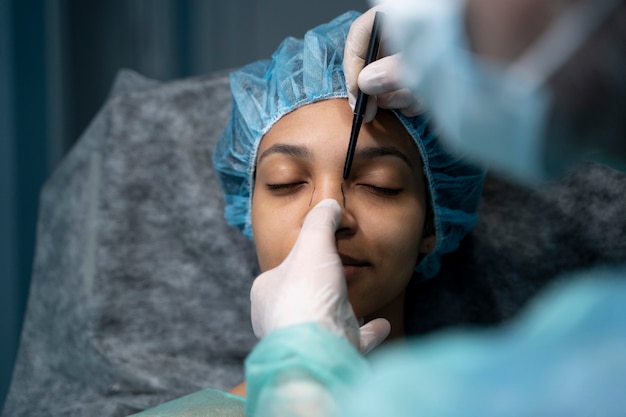
Embracing Nasal Uniqueness
Whether common or extraordinary, the nose is a personal signature. Celebrating its individuality fosters self-acceptance and underscores humanity’s rich tapestry of diversity.
Conclusion
The rarest nose type defies singular definition, arising from a confluence of exceptional traits shaped by heredity, environment, and cultural perceptions. Its rarity enriches the spectrum of human beauty, reminding us that uniqueness is a virtue worthy of reverence.
FAQs
- What governs nasal shape?
Hereditary factors, cartilage structure, and environmental influences shape nasal appearance. - Can nasal shape evolve over time?
Yes, age and physical trauma can alter its form. - Are rare noses universally admired?
Attractiveness is subjective; rare noses often gain admiration for their distinctiveness. - Can surgery replicate rare shapes?
Yes, but achieving natural-looking results requires meticulous precision. - What’s the most prevalent nose type?
Button and Roman noses are among the most ubiquitous globally.
Skin
Eczema and Psoriasis on the Feet: Visuals, Root Causes,

Eczema and psoriasis stand among the most prevalent skin disorders affecting individuals across the globe. When these conditions manifest on the feet, they can cause significant discomfort and pose aesthetic dilemmas. This article delves into the origins, manifestations, and remedial options for eczema and psoriasis of the feet, supplemented by illustrative depictions.
Understanding Eczema: How It Manifests on the Feet
Defining Eczema and Its Underlying Triggers
Eczema, medically termed atopic dermatitis, is a chronic dermatological ailment characterized by inflammation, redness, and relentless itching. Common catalysts include allergic reactions, environmental irritants, and inherited predispositions.
Symptoms of Eczema on the Feet
- Parched, fissured skin.
- Reddened and swollen areas.
- Persistent itch, often intensifying nocturnally.
- Formation of vesicles in severe instances.
Visual Representations of Eczema on Feet
Individuals afflicted may observe inflamed, reddened patches or blistering. Imagery frequently aids in accurate visual diagnosis.
Psoriasis: A Chronic Autoimmune Condition with Distinctive Features
What Defines Psoriasis?
Psoriasis emerges as a chronic autoimmune disorder, spurring the overproduction of epidermal cells. This surplus accumulates, forming plaques frequently observed on the feet.
Manifestations of Psoriasis on the Feet
- It thickened, flaky skin.
- Reddish plaques are often veiled with silvery scales.
- Painful fissures or cracks in the skin.
- Nails may exhibit changes indicative of nail psoriasis.
Visual Evidence of Psoriasis on Feet
Typical depictions reveal heavily scaled skin with a silver-tinged overlay, highlighting the distinctiveness of this condition.

Differentiating Between Eczema and Psoriasis
Key Visual Contrasts
- Eczema: Features redness, oozing vesicles, and pronounced itchiness.
- Psoriasis: Exhibits dry, flaky plaques with silvery layers.
Diverging Etiologies
Eczema is often rooted in allergic hypersensitivity, whereas an autoimmune response drives psoriasis.
Treatment Modalities for Eczema and Psoriasis
Managing Eczema
- Moisturizing Agents: To counteract dryness.
- Topical Corticosteroids: For reducing inflammation.
- Allergen Avoidance: Identifying and steering clear of triggers.
- Natural Remedies: Coconut oil or colloidal oatmeal baths for soothing relief.
Treating Psoriasis
- Topical Applications: Corticosteroids or Vitamin D derivatives.
- Phototherapy: Exposure to UV light.
- Systemic Medications: Biologics or oral therapies for advanced cases.
- Home Solutions: Aloe vera or saline baths to ease symptoms.

Preventive Strategies for Eczema and Psoriasis on Feet
Skincare Routine
- Daily hydration with emollients.
- Use of gentle cleansers to avoid irritation.
Avoidance of Triggers
- Wearing breathable footwear.
- Mitigating stress, a known exacerbator of psoriasis.
Conclusion
Eczema and psoriasis affecting the feet can profoundly impact the quality of life. Through precise diagnosis, bolstered by visual indicators, and effective treatments, sufferers can find substantial relief. Consistent skin care and proactive avoidance of known triggers are indispensable in preventing recurrences.
FAQs
- How does foot eczema differ from fungal infections?
Eczema often presents as redness and dry skin, while white patches and a pungent odor typically mark fungal infections. - Can children develop eczema or psoriasis on their feet?
Yes, eczema is especially common among younger individuals. - What is the typical duration for treating foot psoriasis?
Treatment timelines vary based on severity, with chronic cases requiring long-term management. - Is it possible to have both eczema and psoriasis concurrently?
Although rare, it is feasible to experience both conditions simultaneously, necessitating distinct treatment plans. - Is there a definitive cure for psoriasis?
While psoriasis cannot be eradicated, its symptoms can be effectively managed through appropriate interventions.
-

 Skin9 months ago
Skin9 months agoNatural Oil-Free Face Moisturizer Reviews & Buyers Guide
-

 Hair9 months ago
Hair9 months agoDoes a Flat Iron Kill Lice? Fact or Myth?
-

 Hair3 weeks ago
Hair3 weeks agoDoes a Flat Iron Kill Lice? Fact or Myth?
-

 Skin8 months ago
Skin8 months agoAbout Face Beauty: Tips for Enhancing Your Natural Beauty
-

 Hair9 months ago
Hair9 months agoFunction of Beauty: Personalized Hair Care for Your Unique Needs
-

 Skin8 months ago
Skin8 months agoBeautiful Nails: Tips and Tricks for Healthy and Gorgeous Nails
-

 Hair9 months ago
Hair9 months agoTitanium Flat Iron vs. Ceramic
-
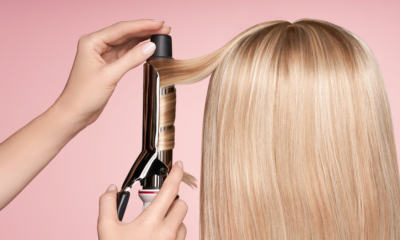
 Hair9 months ago
Hair9 months agoHow to Curl Your Hair with a Flat Iron for Beginners

